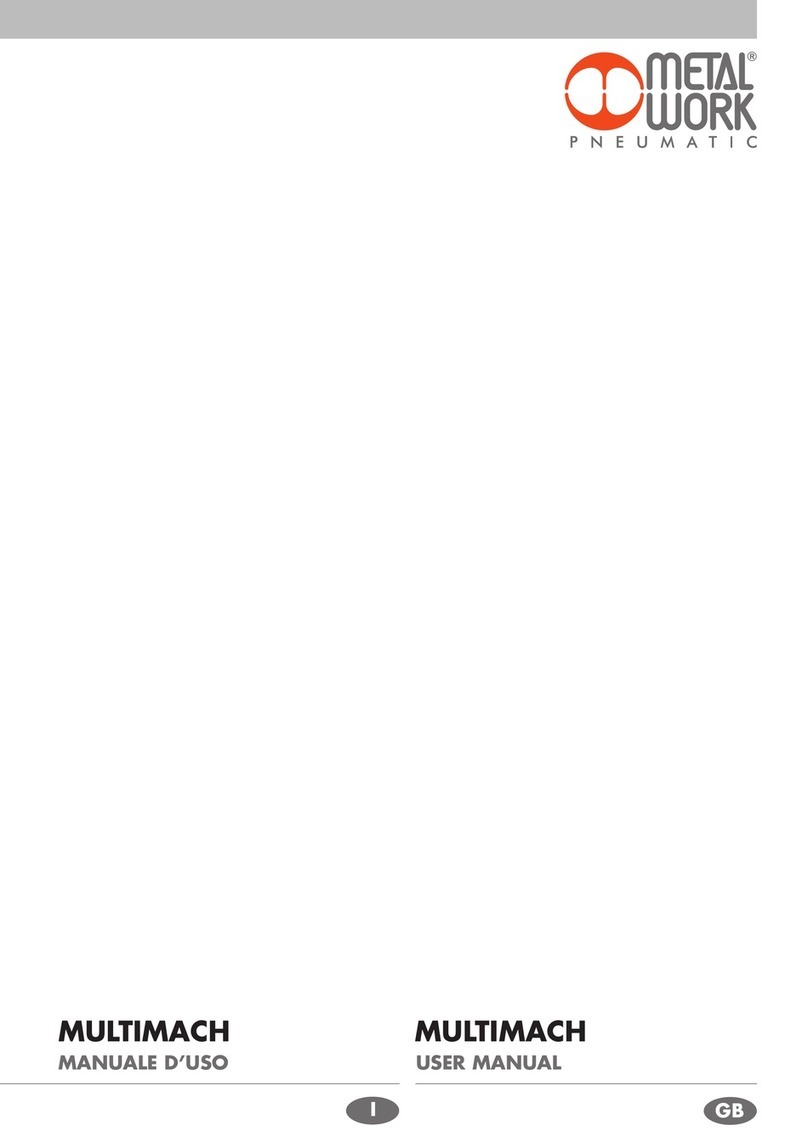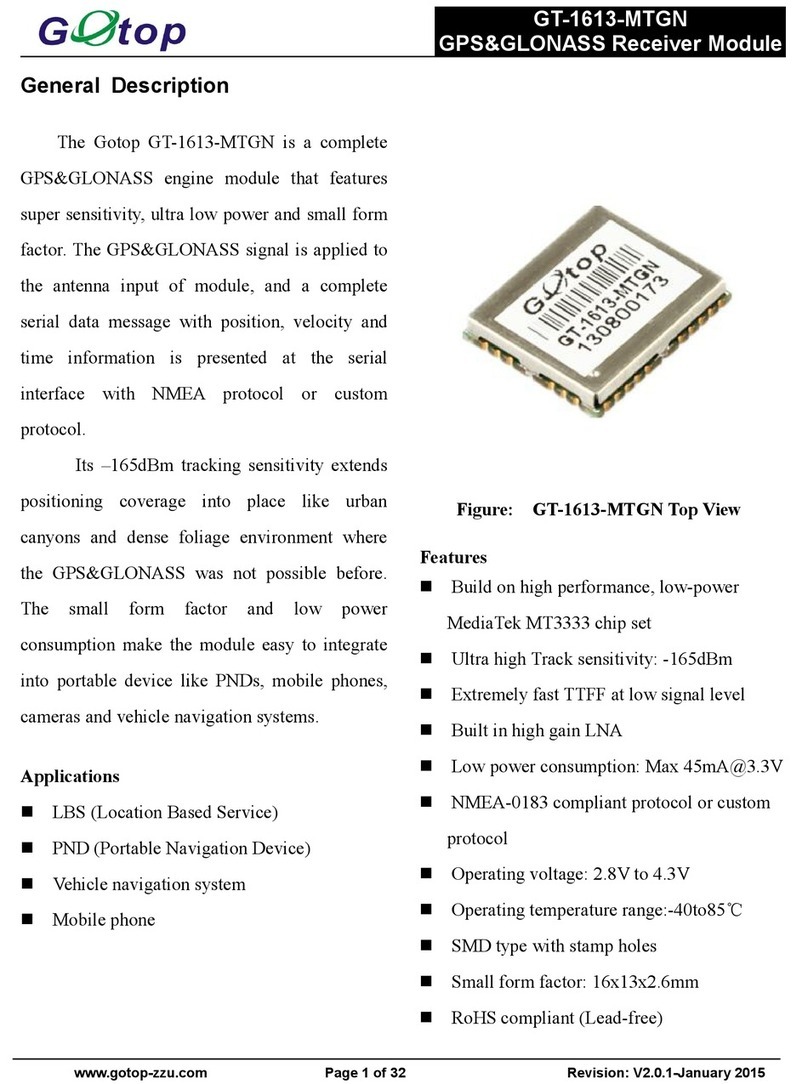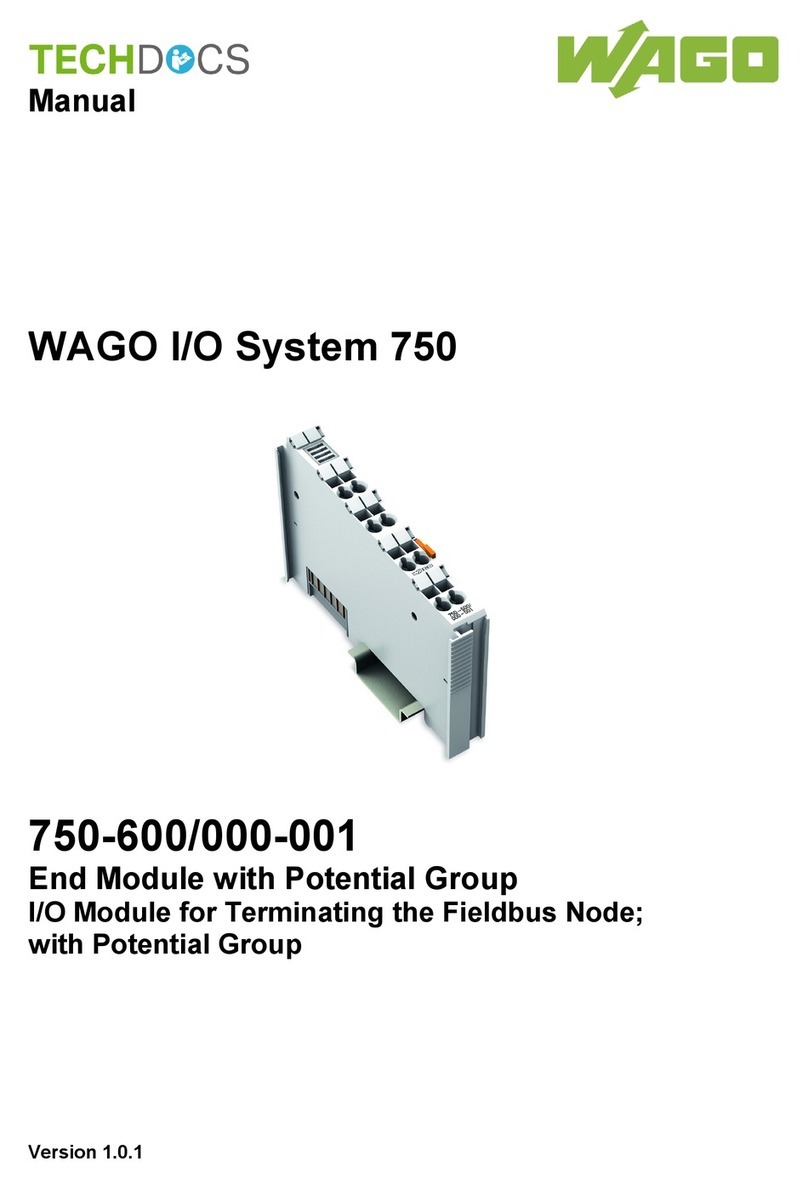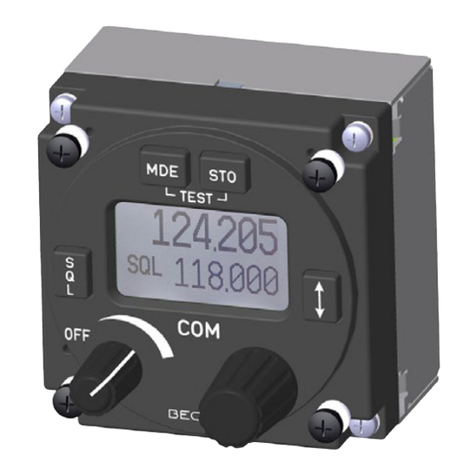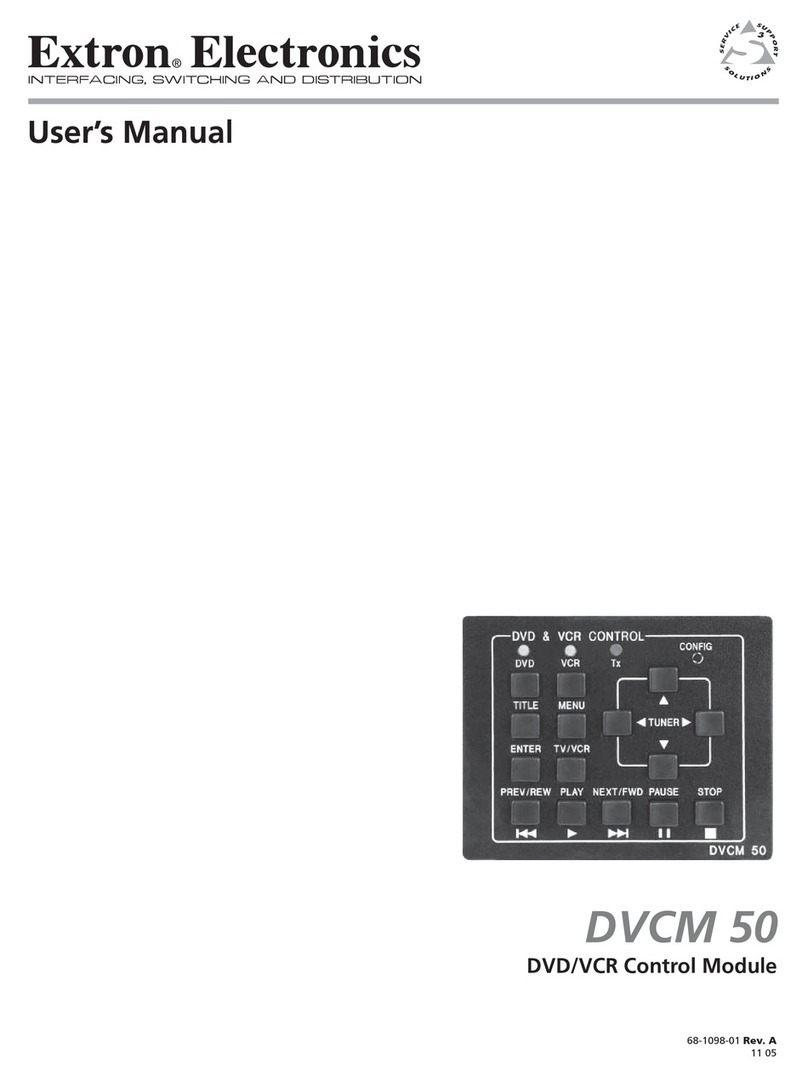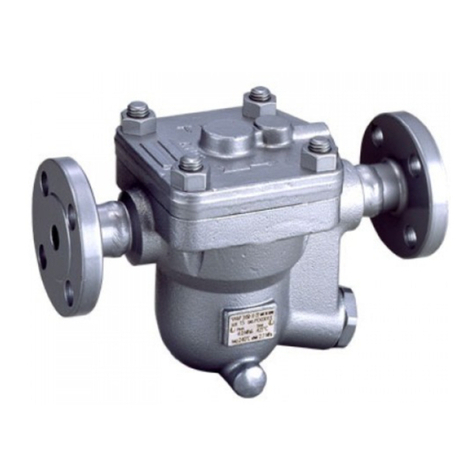GDH Air Series User manual

User Guide
GDH™-Heat-Pump-Manager
Air & Geo Series
!

2
Contents Page
1. Introduction
1.1 Warranty und guarantee 3
1.2 Product description 3
1.3 Power supply 3
1.4 User terminal connection 3
2. Controller board
2.1 Controller board drawing 4
2.2 Controller In & Outputs 5
2.3 Pre connected I/O 6
2.4 Connection valves/pumps 7
2.5 ID Digital inputs (24 V) 8
2.6 Y - Analogue outputs 9
2.7 B - Analogue inputs – Temperature sensors 9
2.8 Temperature sensors configuration 10
3. Controller Display
3.1 Display connection 11
3.2 Connection port 11
3.3 Dimensions 11
4. GDH-Heat-pump Manager
4.1 Main menu 12
4.2 Menu structure 13
4.3 Menu description 14
5. Setup the GDH Heat pump manager
5.1 Functions 17
5.2 Setup 18
5.3 Select the heat pump working mode 19
5.4 Select the heat pump operation mode 20
5.5 Automatic Unit mode 21
5.6 Setting temperatures for standard operation mode 22
5.7 Setting temperatures for energy saving mode 23
5.8 Automatic Summer and Winter changeover 24
5.9 Heating circuits 24
5.10 Heat circuit settings 25
5.11 Heating / cooling curve 26
5.12 DHW / Anti-legionella mode 26
5.13 EVU – heat management 27
5.14 Bivalent mode 28
5.15 Fan/Night mode 28
5.16 Freeze protection Geo 29
5.17 Freeze protection Air 29
6. Parameter table 30
7. Alarm management 59
8. Optional accessories
8.1 Room display 63
8.2 Dew point sensor 63
8.3 BMS – Internet module 64
9. Temperature probe resistant 65
10. Change the battery 66

3
1.Thank you for choosing to purchase a
GDH heat pump.
GDH heat pumps are subjected to strict
quality control tests in terms of functional
efficiency
and performance during the final
inspection process.
Our GDH engineers hope you enjoy our
products and the associated cost savings!
1.1 Warranty and guarantee
Providing all installation and operation
instructions have been observed, GDH
provides a 24-m
onth warranty. User error,
improper installation, incorrect control
settings or damage caused by third parties
or vandalism are not covered by the
warranty.
1.2 Product description
This GDH-Heat-Pump-
Manager is a
microprocessor-based electronic controller in
compliance with the European RoHS
directives. It provides a solution for many
applications in the air-
conditioning and
refrigeration sectors and ensures absolute
versatility, allowing specific products to be
created on customer request. The GDH-
Heat-Pump-
Manager runs the control
program, and is fitted with the set of
terminals required for the connection to the
devices (compressors, fans, …). The
parameters are saved to Eeprom, ensuring
they are stored even in the event of power
failures (without requiring a backup battery).
The embedded driver for single-pole stepper
electronic expansion valve guarantees best
performance of the cooling circuit thanks to
PID superheat control. Finally, the GDH-
Heat-Pump-Manager offers the possibility of
connecting it t
o the room terminal for
monitoring and controlling the room
temperature.
1.3 Power supply
230 Vac version: The power supply to the
GDH-Heat-Pump-
Manager and terminal
should be separated from the power supply
to the other electrical devices (contactors
a
nd other electromechanical components)
inside the electrical panel. The internal
transformer ensures double insulation
between the instrument and the high voltage
power line.
1.4 User terminal connection
The maximum distance between the GDH-
Heat-Pump-Manager and the user terminal
is shown in the table below:
cable type
distance
power
supply
telephone
30 m
150 mA
AWG24
shielded
cable
200 m
150 mA

4
2. Controller
2.1 Controller board drawing

5
2.2 Controller In & Outputs
Already connected by the factory
Recommend connection for installation
Additional connection for installation
GEO
AIR
220 Volt Outputs
NO1
Compressor 1
Compressor 1
NO2
Ground source pump
-
NO3
Primary circuit pump
Primary circuit pump
NO4
DHW circuit pump
DHW circuit pump
NO5
Mix circuit pump
Mix circuit pump
NO6
External boiler / heater
External boiler / heater
NO7
Heating circuit pump
Heating circuit pump
NO8
DHW boiler/heater
DHW boiler / heater
NO9
General Alarm
General Alaram
NO10
4-way reversing valve
4-way reversing valve
NO11
Mix circuit pump 2
Mix circuit pump 2
NO12
Crankcase heater
Crankcase heater
24 Volt Inputs
ID1
Flow switch ground source side
-
ID2
Dew point sensor 1 – Heating
Dew point sensor 1 – Heating
ID3
-
-
ID4
Dew point sensor 2
Dew point sensor 2
ID5
EVU / Heat management
EVU / Heat management
ID6
DHW storage heater overload
DHW storage heater overload
ID7
Integration boiler/ heater alarm
Integration boiler/ heater alarm
ID8
Remote on-off
Remote on-off
ID9
Dew point sensor 3
Dew point sensor 3
ID10
Primary circuit flow switch
Primary circuit flow switch
0-10 Volt Output
Y1 (0-10V)
Mix valve 1
Mix valve 1
Y2 (0-10V)
Cooling circulation pump
Cooling circulation pump
Y3 (0-10V)
Mix valve 2
Mix valve 2
Y4 (0-10V)
-
Fan
Temperature sensors
B1 (NTC)
Ground source circuit outlet temp.
Heat exchanger temperature
B2 (NTC)
Ground source circuit inlet temp.
-
B3 (NTC)
DHW control temp.
DHW control temp.
B4 (NTC)
Prim. system inlet temp.
Prim. system inlet temp.
B5 (NTC)
Mixing heating circle temp. 1
Mixing heating circle temp. 1
B6 (NTC)
Outside air temp.
Outside air temp.
B7 (NTC)
Primary system outlet temp.
Primary system outlet temp.
B8 (NTC)
Mixing heating circle temp. 2
Mixing heating circle temp. 2
B9 (NTC HT)
Comp. discarge gas temp.
Comp. discarge gas temp.
B10 (NTC)
Suction temperature
Suction temperature
B11 (0-5V)
High pressure transducer
High pressure transducer
B12 (0-5V)
Low pressure transducer
Low pressure transducer
!

6
2.3 Preconnected I/O
Outputs: NO 220 Volt (6 Ampere)
NO3
1. pre-connected Primary circuit pump
Connect your main circulation pump from the heat pump to your
buffer tank. This pump is only working when the heat pump works.
NO 4
2. pre-connected DHW circuit pump / 3-way valve
The DHW circulation pump or 3-way-valve loads the Domestic Hot
Water tank when the heat pump switches to DHW mode.
NO 5
Mixing heating circuit pump 1
Connection for the circulation pump for heating mix circuit pump 1
NO 6
3. pre-connected External boiler / heater
An additional heater can be electric or a gas/oil boiler. The heater and
heat pump can work together or alone.
NO 7
Heating circuit pump
Circulation pump connection for the heating circuit pump.
NO 8
4. pre-connected DHW storage additional heater
Additional heater for the DHW - Domestic Hot Water Buffer tank.
NO 9
General alarm
When the heat pump has any alarm, this contact will be closed. You
can switch between close and open in the service settings.
NO 11
Mix circuit pump2
Connection for the circulation pump for heating mix circuit pump 2.

7
220V – 50 Hz – max. 6 A
2.4 Connection valves/pumps
The most important digital outputs are pre-connected inside the heat pump.
No.
Function
1
2
3
4
5
Primary circuit pump
DHW circuit pump / 3-way-valve
Additional boiler / heater
DHW heater
4-way-valve (Factory connected)

8
2.5 ID - Digital inputs (24 V)
ID2
Dew point heating circuit
Dew point sensor for the cooling mode of the heating cirucuit.
ID4
Dew point mixing heating circuit 2
Dew point sensor 2 for the cooling mode of the Mixing heating circuit
2.
ID5
EVU / Heat management
Connection to the EVU device from your local energy supplier. Switch
the heat pumps into the EVU mode. Please ask your local energy
supplier if you need this function.
ID8
Remote on-off
Switch the heat pump on or off by an external controller / Home
control system.
ID9
Dew point sensor 3
Dew point sensor 3 for the cooling mode of the Mixing heating circuit
2.

9
2.6 Y - Analog outputs
Y1
Heating circuit 1 – Mix valve
Valve for the heating mix circuit 1
Y2
Cooling pump / valve
Connection for a cooling pump for the primary pump to the buffer
tank circuit.
Y3 Heating circuit 1 – Mix valve
Valve for the heating mix circuit 1
2.7 B - Analog Inputs – temperature Sensors
B3
DHW control temp.
Domestic Hot Water tank temperature control.
B5 Mixing heating circle temp. 1
Temperature for control the 3-way-valve of the heating circuit 1.
B6 Outside air temp.
Connect to the north side of the building.
B7 Primary system buffer tank / return temp.
Connect to your buffer tank or back temperature (inlet).
B8 Mixing heating circle temp. 2
Temperature for control the 3-way-valve of the heating circuit 2.

10
2.8 Temperature sensors configuration
The heat pump manager needs different temperature sensors to manage the hydraulic functions.
You need to activate some sensors for different functions.
You can also set an offset for the sensor. In some cases the temperature must be calibrated, f.ex.
when the sensor cable will be extended.
Main sensors for the hydraulic functions are:
Sensor
Function
Menu
Standard
B3
DHW control. Temperature
Controls the water tank for the DHW hot water
production. When the sensor detect the
temperature to heat up the water tank, the
controller will switch the 3-way-valve or the water
pump.
Gfb02
NO
B4
Primary system inlet temperature
Controls the water tank temperature of the heating
buffer tank. In some applications without buffer
tank, the sensor can be placed at the back pipe to
the heat pump. When the sensor turns on the heat
pump, the controller switch on the primary
circulation pump.
Gfb04
YES
B5
Mixing heating circle temp. 1
Controls the position of the 3-way-valve for the
mixing circle. The sensor will be placed direct to
the circle.
Gfb03
NO
B6
Outside Air temp.
The sensor needed for the defrost, temperature
compensation (heating curve), freeze protection
functions.
Gfb03
YES
B7
Primary system outlet temp.
Measures the outlet system temperature. Used for
the freeze protection function.
Gfb04
YES
B8
Mixing heating circle temp. 2
Controls the position of the 3-way-valve for the
mixing circle. The sensor will be placed direct to
the circle.
Gfb04
NO

11
3.0 Controller Display
3.1 Display connection
Connect the display with the controller
board in your heat pump.
Connector J7 on the controller board.
Max. communication cable
Phone cable
30 m
CAT5 cable
200 m
Plug: RJ11 / 6 poles
Cable: 6 Adriges phone cable
RJ11 plug < > RJ11 plug
Length of communication cable is 10m.
3.2 Connection port
Connection of display by RJ11 plug on the
backside of controller display.
3.3 Dimensions
Figures in mm

12
!
4. GDH-Heat-Pump-Manager
4.1 Main Menu
The graphic display control all heat pump functions.
The display is shared in 4 areas.
1.) System Temperatures
DHW = Domestic Hot Water temp.
Outd. T= Outdoor temp.
System T = Heating temp.
3.) Status
4.) Status heat pump
Compressor
On
DHW
Off
Water pump
ECONOMY
Additional heater
AUTO
Defrost
Alarm
Menu
Esc
Up
Enter
Down
Status
!
!
2.) Date, Time
!
Status
Status
!

13
4.2 Menu structure
A. !On/Off
"
"
B. Set point
"
"
C. !Clock / Bands
"
D. Inputs/Outputs
"
E. Alarm log
"
F. Change board
"
"
G. Service
"
a. Change language
"
b. Information
"
"
c. Unit temp. control
"
"
d. Hour counter
"
"
e. BMS config.
"
f. Service parameters
a. Hour counter!settings
"
"
b. Probe calibration
"
"
c. Temperature control
"
"
d. User default/change PW1
g. Manual management
H. Manufacturer
"
"#!$%%&''!()&!*&+,-!&+(&.!/$''0#.1!
234!

14
4.3 Menu description
A. Unit On/Off
The unit status can be set from the main
menu (A.), based on the selection made.
ON/OFF Unit
On the first row the selection can be:
ON = standard conditions,
OFF = standby,
ENERGY SAVING = “reduced” set point for
greater energy saving,
AUTO = scheduler activated.
The second row (only editable if OFF is
selected on the first row), on the other hand,
is used to select the heat pump operating
mode (COOLING+DHW, HEATING+DHW,
DHW ONLY, HEATING ONLY, COOLING
ONLY, AUTO).
The remote ON-OFF digital input can be
used to place the entire system in standby,
including domestic hot water control.
Note: standby can be set on screen A02
with the “enable temporary off” function,
used to start the unit again at a pre-set time
and date.
B. Set point
Used to set the set point for the
Antilegionella function and the heat pump
(standard and energy saving set point for
“heating/cooling”, and for domestic hot water
production). The following figures only show
the selection screens relating to the heat
pump set point.
Thermoreg. Unit
C. Clock/Time bands
Description of operation: Heat pump
manager is fitted with an internal clock with
backup battery that stores the time.
and date for all the associated functions. The
time, date, time bands, closing periods and
holidays are set from the Clock/Time bands
menu (C.). The screens are:
•Time and date setting
•Four daily time bands
•Closing periods, up to a max. of three
•Holidays/special dates, up to a max.
of six
Below are the screens for setting the “unit
only”:
Clock
To set less time bands than the four allowed,
simply leave the symbols “--:--“ in the field
“hh:mm”, doing the same for the set point.
On any day, four different time bands can be
set, with corresponding set point for each
band. After this each day of the week can be
selected, either copying the previous day#s
settings, or configuring them day-by-day. To
select the set point see the corresponding
paragraph and the parameters in the general
table of parameters.
For these types of units, system inertia is on
average quite long, as radiant systems very
often have large masses; in these cases, the
working set points (COMFORT and
ECONOMY) are set very close together.
Consequently, also the time bands are
normally reduced, because they consider the
significant inertia of the system.

15
Note: OFF status still guarantees unit
antifreeze protection.
Time bands can be created for one day
and then copied to other days if these are
the same.
D. Inputs/Outputs
From the main menu (D.), both the type and
the physical status of the inputs and outputs,
digital and analogue, can be displayed in
sequence. If the input or output has not been
set (no device connected), “----“ will be
displayed. The related screens are shown
below.
Input/Output
E. Alarm log
From the main menu (E.) the logged alarms
can be displayed in sequence; to reset the
alarms, access the log from the service
menu with password. The “ALARM” button
on the other hand is used to mute the buzzer
(if present), display the currently active
alarms and reset them (obviously these
remain in the log) and then access the log
directly.
Data logger
Note: the list of active alarms can be
accessed from the main page, by pressing
.
G. Service
The service submenu is accessed from the
main menu (G.), and is divided i
nto two
parts, the first (a,b,c,d) not password-
protected is used to display and set the
following data:
G.a. Change language: select one of the
languages loaded in the application (Italian,
English...).
G.b. Info: view information relating to the
application code (and corresponding version)
on the first screen, while the second shows
information concerning the GDH board
hardware.
Information
G.c. Unit temp. control:
G.d. Operating hours: displays the operating
hours of the main moving devices
(compres
sors and pumps on the unit and
that depend on the type of configuration) that
may require periodical maintenance.
Working hours
Note: from this point on in the submenu,
access requires password entry (PW1 –
default 1234).
G.e. BMS configuration: used to set all the
parameters required for connection to a
supervisory system; this thus depends on
the type of optional card that is fitted and the
type of protocol selected.
Choosing “CAREL”, connection can be made
over RS485 to a supervisor that supports the
CAREL protocol, and cards can be
connected that convert the CAREL protocol
to others, such as the TCP/IP card or the

16
Trend card.
BMS config.
G.f.a. Hour counter settings: used to set the
operating hour threshold for the main
devices on the unit (depending on the type of
configuration) that require periodical
maintenance.
The timer for each device can be reset on
the same screen.
Work. Hours. set
G.f.b. Probe calibration: used to set an offset
to be added to or subtracted from the
read
ing made by the probe in question.
Once the offset (Ofs) value has been
confirmed, pressing automatically updates
the reading of the corresponding probe (shown
on the side).
Probe adjust.
Note: The respective probes can also be
enabled or disabled on these screens.
G.f.c. Temperature control: this branch
includes all the parameters relating to
temperature control and modifiable during
installation or service, except for those that
corresponding to the manufacturer area,
which are found under the H.c. branch.
G.f.d. User def./change PW1: used to reset
the alarm log and modify password PW1.
User default
G.g. Manual management: used to switch
the individual actuators on the unit from
automatic to manual.
For digital outputs, the status may be ON or
OFF, while for analogue outputs the
selection varies from 0-100%, obviously all
the defaults are Auto. This selection
bypasses control, but not the alarm
thresholds set, so as to ensure safety of the
unit. In general, this operation is used to test
the individual actuators during installation.
Manual mng.

17
5. Setup the GDH Heat pump manager
5.1 Functions
The heat pump is delivered out with standard factory settings. After installation, you can
switch it on for testing.
The standard factory settings are:
Mode: Heating
Temperature: Heating 55 oC
Heating / cooling / dhw / auto mode:
The temperatures will be calculated by the
heating curve and the temperature setting.
When Auto mode is selected you can setup
different time programs.
Don´t use the cooling in winter for the
models that have the heat exchanger
outside.
Anti-Legionella function:
Heats up the water tank to a higher
temperature. The date is set by a scheduler.
This function avoids legionallas in the water
tank.
DHW mode:
In “DHW”-mode, only the Hot Water function
is enabled. Temperature setting is using by
the setpoint for DHW.
When Heating / Cooling with “DHW”
selected, the DHW has priority.
Bivalenz / Boiler:
The controller can control up to two
additional heaters. One for the main circuit
for heating and the other one can be set into
the dhw tank. The activations depends on
the outside temperature. You can select if
the heat pump will be switchted off or run
together with the boiler.
Circulation pumps:
The primary circulation pump works only
when the heat pump compressor is on. You
have the possibility to set up the pump to
“always on”.
DHW-3-Way-Valve pump output can be
used also as a DHW circulation pump.
Additional Mixing circulations pumps are
working only when the circuit is activated
EVU-Mode:
Some electric companies switch off the
electricity for heat pumps in peak seasons
for 1-2 hours.
This function recognizes the cut off from the
compressor and optional you can select a
additional heater when the water
temperatures falls under the setpoint.
Freeze Protection (Only for AIR /not
split): Protects the heat exchanger outside
in the heat pump against frost. The heat
pump switches automaticly on the circulation
pumps when the temperature at the heat
exchanger is under the selected set point.
Fan-Night mode: (Only for AIR series)
You can select a time range when the fan
should be running slower.
Please note that the fan is only running max.
60%. You should not run it under 30%.

18
5.2 Setup

19
5.3 Select the heat pump working mode
GDH heat pumps can operate by a manual mode or by automatic mode selections.
The user must select the mode on his own requirements and efficiency aspects.
OFF Heat pump is in “STAND BY” mode
ON Heat pump works with “ON” temperature settings
AUTO Heat pump works with the “TIME SHEDULER”
ENERGY SAVE Heat pump works with “ENERGY SAVE” temperature settings
Options for the working mode select
ON/OFF Unit A01
Heat pump unit
OFF
AUTO

20
5.4 Select the heat pump operation mode.
!
You can select only this menu, when the heat pump is “OFF”.
AUTO Automatic change over between Summer and Winter mode
COOLING Only “COOLING” according “ON” temperatures
HEATING Only “HEATING” according “ON” temperatures
COOLING+DHW “COOLING” + “DHW” according “ON” temperatures
HEATING+DHW “HEATING” + “DHW” according “ON” temperatures
DHW ONLY “DHW” only according “ON” temperatures
ON/OFF Unit A01
Heat pump unit
OFF
AUTO
Options for the operations mode select
This manual suits for next models
1
Table of contents
Popular Control Unit manuals by other brands

HBC-Radiomatic
HBC-Radiomatic HBC TC693 user manual
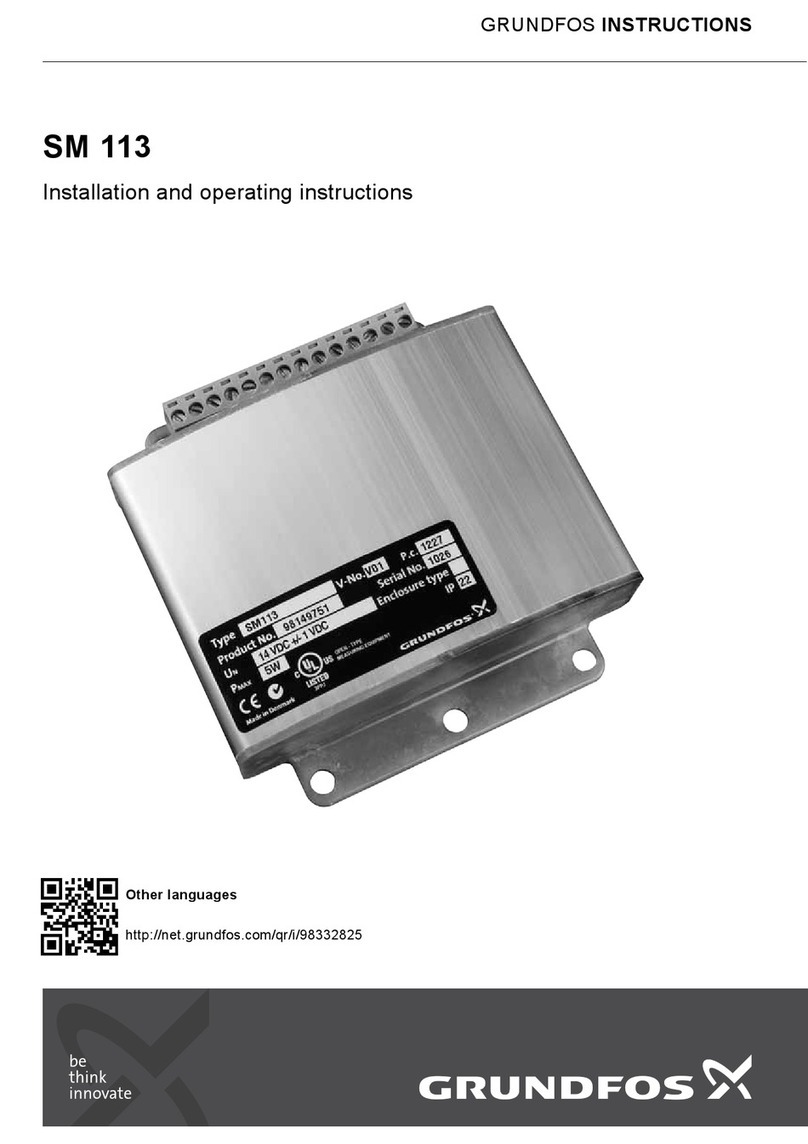
Grundfos
Grundfos SM 113 Installation and operating instructions
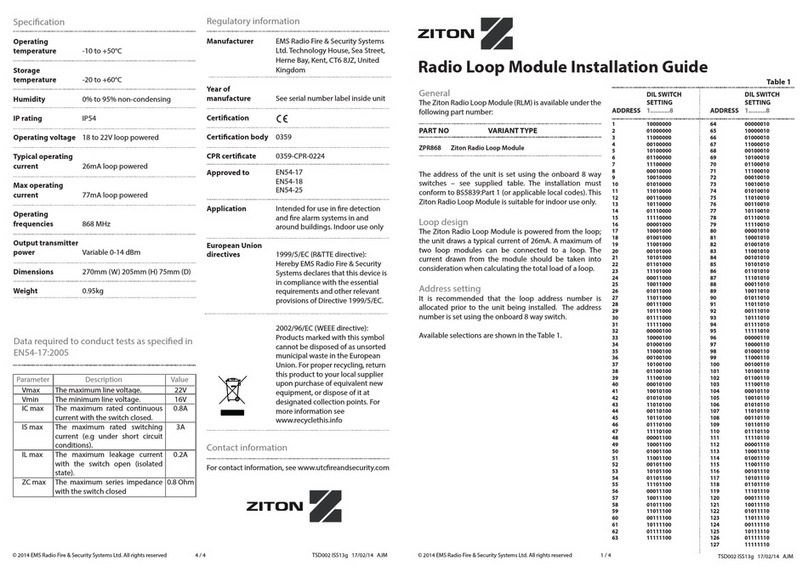
Ziton
Ziton ZPR868 Installation guide / instruction manual

Flowserve
Flowserve Valtek Mark Six quick start guide
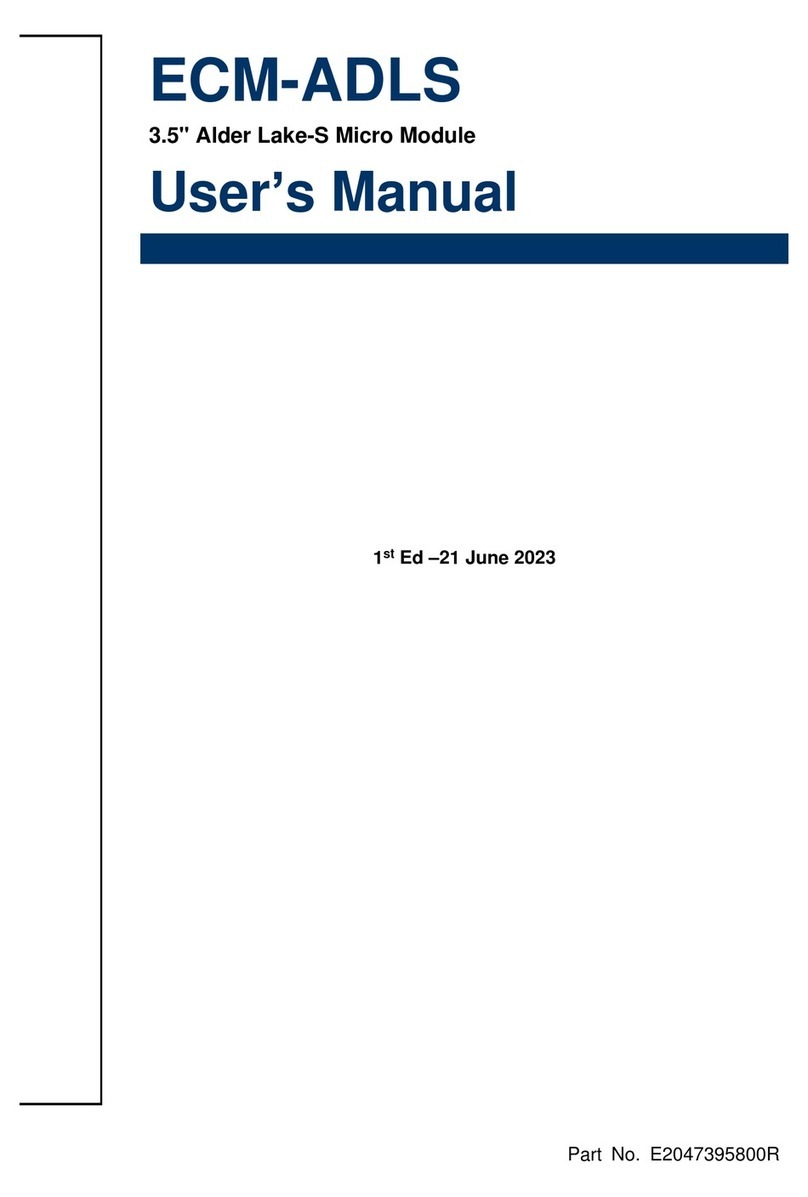
Avalue Technology
Avalue Technology ECM-ADLS user manual
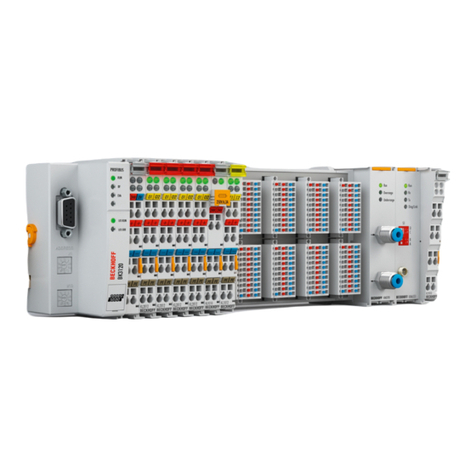
Beckhoff
Beckhoff KM6551 Documentation

